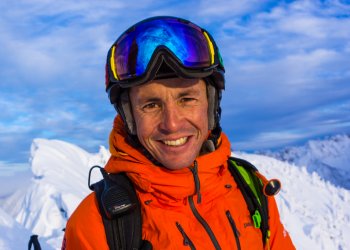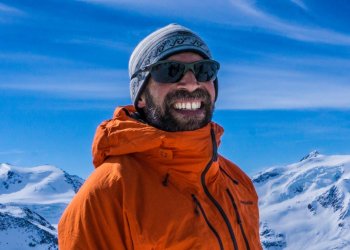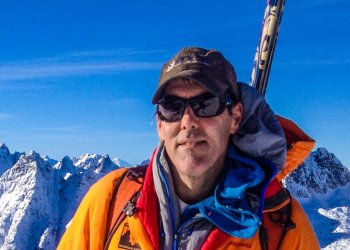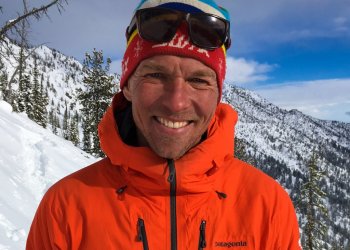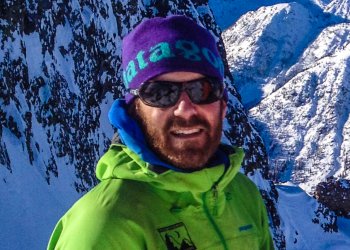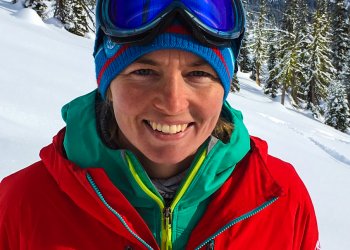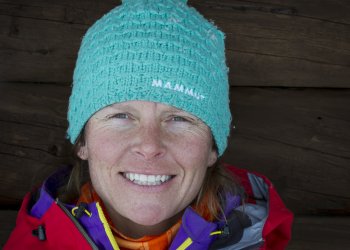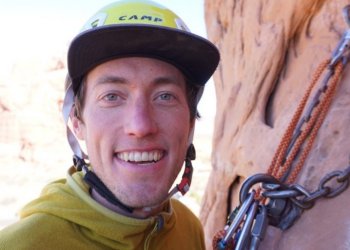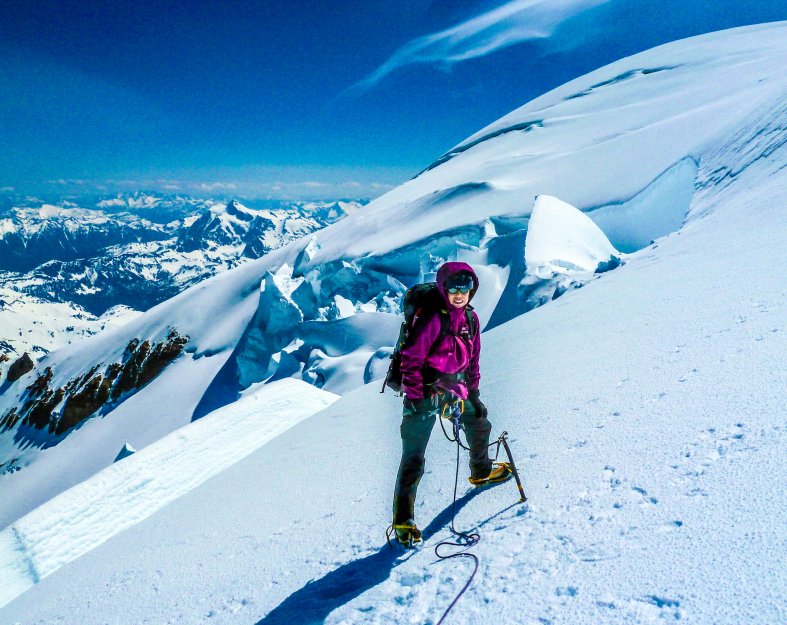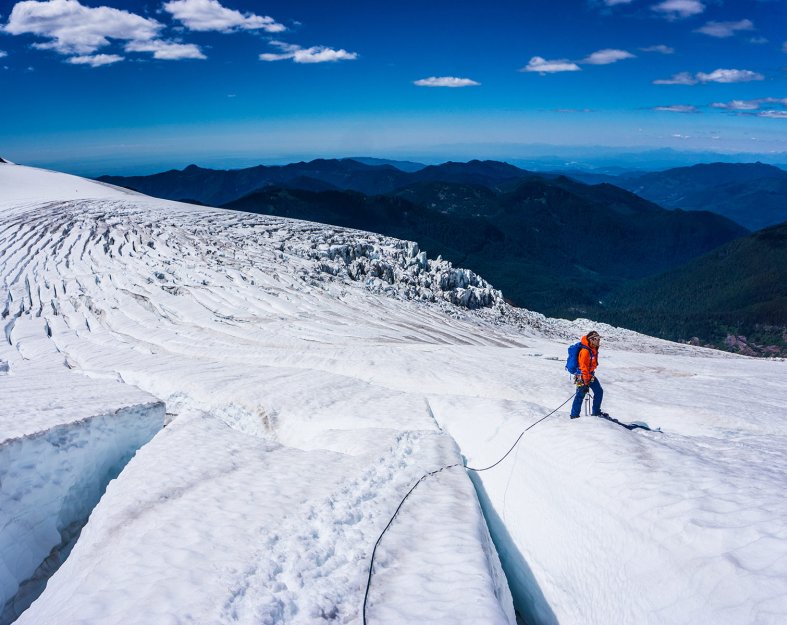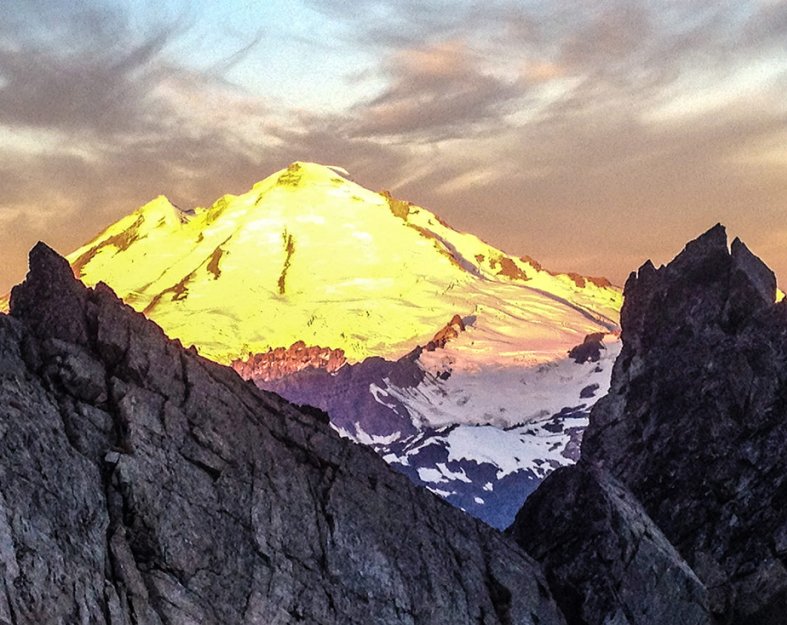Mount Baker, a heavily-glaciated stratovolcano that tops out at 10,781 feet, is the tallest peak in the North Cascades and the third tallest in Washington. This massive snow and ice covered peak offers one of the best alpine training grounds for learning snow and ice climbing, glacier travel skills and as a place to prepare for higher peaks around the world.
Set 3-day group climbs with up to four guests and one guide.
Or set up your own custom climb if you would like to extend your trip!
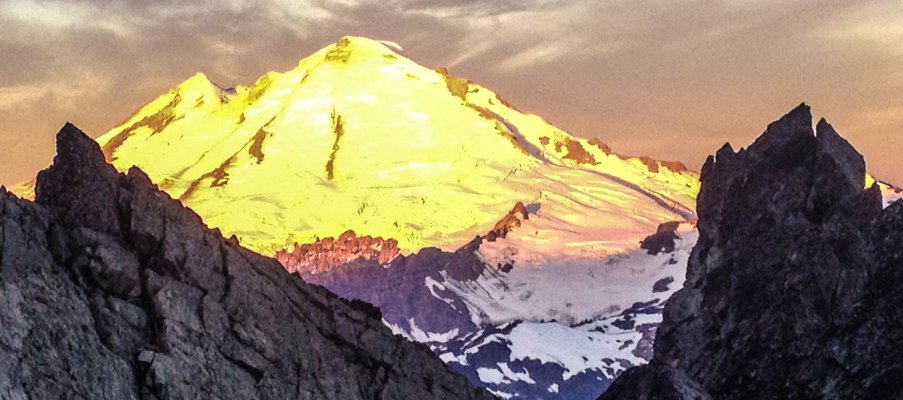
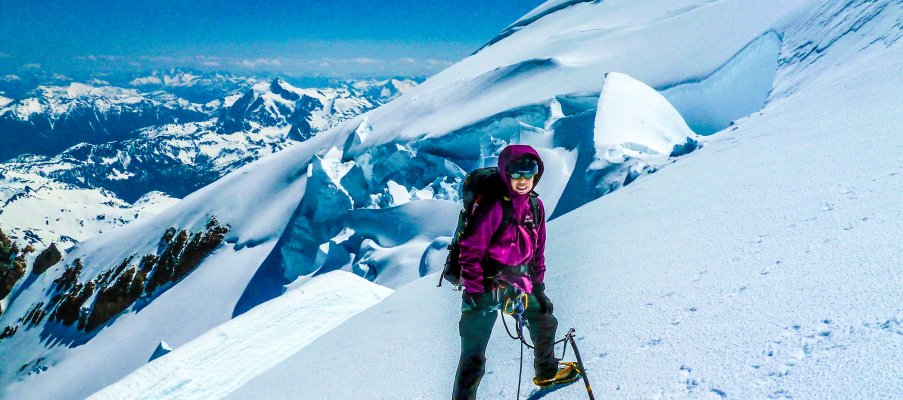
NCMG offers custom climbs of Mount Baker of varying length and difficulty. Below are our three most popular routes:
The Coleman-Deming Route. The Coleman-Deming route was the route used by the first ascent party in 1868 and remains popular today. Offering the unique opportunity to climb on two aspects of the mountain, the route begins on the north facing slopes of the Coleman Glacier, before wrapping onto the west-facing aspect of the Deming Glacier and a view of the opposite side of the mountain.
As with most volcano climbing, the key to success on this route is good weather and good endurance. While the climbing is not very technical, it does require over 7,000′ of climbing from the trailhead and a long summit day with close to 5,000 vertical feet of elevation gain.
Depending on goals and weather, this can be climbed in two or three days. Additional days can be added for more training and/or acclimatization.
The North Ridge. The North Ridge of Mount Baker is one of the classic north face routes in the Washington Cascades. Similar to the other classics such as Liberty Ridge on Mount Rainier, the North Ridge combines massive glaciers and steep alpine ice climbing that leads directly to the summit of this 10,781′ volcano. The season for this route is fairly long with good summer climbing conditions usually starting in May and lasting through September.
This route is typically done in two days, but an additional day can be added to include some ice climbing training on the Lower Coleman Glacier.
The Easton and Squak Glaciers. The Easton and Squak glaciers on the south side of Mount Baker are considered to be the least-technical routes on the mountain. Offering a wide and low-angled glacier that runs uninterrupted to the summit, these can be one of the most direct lines on the mountain. For this reason, it is also very popular as an early season ski or snowboard descent.
For the Coleman-Deming, Easton and Squak Glaciers, no prior mountaineering experience is needed. As with most volcano climbing, the key to success on this route is good weather and good endurance. While the climbing is not very technical, it does require over 7,500′ of climbing from the trailhead and a long summit day with close to 5,000 vertical feet of elevation gain.
For the North Ridge of Baker and other technical routes on the mountain, you will need additional ice climbing and glacier climbing experience. A crevasse rescue course and water ice climbing experience is recommended.




